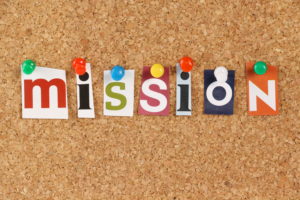This is a post from our super smart intern, Vicki.
“I’m sorry.” Two words that seem powerful, but are really pretty lame.
To fail is human. The time comes when even the best of us have to own a failing, but promise me you’ll never say you’re sorry. I’m not saying that you shouldn’t own up to your mistakes. I am saying “I’m sorry” is a terrible way to do it.
Apologies are important. Let’s look at how to do them well.
In crafting your language, be clear on the type of failure you are addressing. There are two types of failures: routine failures and serious failures.
- Routine failures should not be apologized for. You are amazing, but you don’t have superpowers. You can’t keep equipment from breaking down or keep key volunteers from moving away. Apologizing for things like this builds the expectation that everything should always be perfect. Don’t do that.The only way to avoid ever failing is to never try anything. Without trying things, you can’t find new and better ways of doing things. So trying is good and failing is to be expected. But don’t apologize simply because something you try doesn’t work out.
- In some cases, the failure is more serious. Situations of mismanagement or ethical breaches require genuine apologies. The more grave the need for an apology, the more reason to plan it carefully.
As you can see, in either case, a knee-jerk “I’m sorry” is vague and ineffective. So how can you address the issue (which is important to do) without saying you’re sorry since that’s vague and ineffective? By following these steps:
The building blocks of an effective apology:
- In any communication plan, the first step is to be clear on what your goal is. Each situation is different, but the core goal is restoration. You need to restore trust. In the immediate aftermath, many people simply want the painful repercussions of failure to stop. Not only is this goal shortsighted, it focuses you on the wrong person: yourself.
- That brings us to the second step. Focus on who you are speaking to and their needs. They don’t need to see you grovel and cry. They need to feel confident that the situation will get better.
- How can you give them hope? By sharing your plan. The third step of your messaging plan is where you get to shine. Tell them where things went wrong or at least how you are investigating the source of the problem. If the failure involves an ethical breach, identify the values that have been violated and express the organization’s recommitment to those values. Tell them what procedures you are putting in place to keep this from happening again. Tell them how great things are going to be when you are done. Be specific. Be positive.
Does the What, Who, How structure of this post look familiar? If so, pat yourself on the back. You’ve been paying attention! What, who, and how make up the core components of the Claxon Method and the 1, 2, 3 Marketing Tree. We usually talk about applying the Claxon Method to marketing action plans, but you can apply it to all sorts of things.
For a beautiful example of effective communication about failure, check out Splash’s fail log.They link to it from the front page of their website, and they are right to be proud of it. When I see an organization handle failure like a champ, I trust them all the more.

 I’ve been spending lots of time thinking about Mission Statements because of our
I’ve been spending lots of time thinking about Mission Statements because of our 




 Last week, I had the pleasure of presenting at the
Last week, I had the pleasure of presenting at the 


